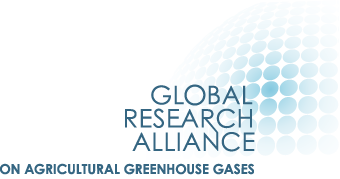Keywords: mitigation policy | dairy cattle | NAMA
What needs are being addressed? Climate policy is a rapidly developing area. Elaboration of national policies, international commitments and sub-national actions often takes place in parallel. Kenya’s experience shows the important role that improvements in the national GHG inventory can play in aligning the measurement, reporting and verification (MRV) of initiatives at national and sub-national level, as well as alignment with accounting for the NDC at international level.
Linking NAMAs and NDCs: Kenya’s National Climate Change Action Plan (NCCAP) is the guiding document for climate-related policies and measures in Kenya. In order to identify opportunities and priorities for GHG mitigation, the NCCAP described a ‘reference case‘ or business-as-usual scenario for national GHG emissions to 2030, and highlighted opportunities for reducing national GHG emissions below that scenario. Analysis of mitigation potentials then informed Kenya’s INDC target for mitigation. In some sectors, where prior bottom-up analysis had been conducted, the mitigation opportunities were closely linked to specific policies and measures. For the agriculture sector, a target or reducing emissions by 30% was set, and promising options were identified, but specific measures to achieve that target were not determined.
For livestock emissions, analysis in the NCCAP assumed that the trend in emissions would be a continuation of historical trends in livestock population and a constant Tier 1 emission factor. Bottom-up analysis of mitigation potential in the livestock sector was not available when the NCCAP was being drafted, so the priorities set out in the Action Plan were not informed by specific analysis of livestock sub-sectors. And in any case, quantification of emission reductions would not have been possible using a fixed Tier 1 emission factor.
Kenya’s dairy NAMA began to be developed after the release of the Action Plan. When developing BAU scenarios for the dairy sector, the NACCP was consulted, but because of the limitations of the methods used in the analysis for the NACCP, new scenarios were developed for the dairy NAMA. These scenarios were developed taking Kenya’s Dairy Master Plan (DMP) as a guide, in which per capita milk demand is forecast to double by 2030. A BAU scenario (i.e. the DMP’s target is met with no change in emission intensity), and several mitigation scenarios (i.e. the DMP’s target is met with different trends in emission intensity over time) were produced using a Tier 2 model (GLEAM) that was able to relate scenarios for dairy cattle populations and milk yield to changes in emission factors and emission intensity. The resulting scenarios are closely related to dairy sector policy scenarios, but not to analysis underlying national climate policies. Better alignment of mitigation ambition in the livestock sector with analysis underling the NDC will require that the NDC is informed by analysis using a Tier 2 approach to quantification of livestock emissions.
Linking NAMAs and national GHG inventories: The MRV methodology proposed for Kenya’s dairy NAMA involves establishing a baseline through regional surveys of smallholder dairy farms to collect data needed to estimate emission intensity using a Tier 2 approach in each region. Emission reductions due to changes in emission intensity and yield will be calculated in comparison to this baseline. On this basis, the resulting emission reductions can be reported to the agencies that fund implementation of the NAMA. They can also be reported in the mitigation section of the Biennial Update Report, along with a description of the methodologies and assumptions used in estimating emission reductions. However, because the emission reductions will be achieved through improvements in dairy cow productivity, the resulting changes in emissions per animal would not be reflected in the national GHG inventory. Kenyan stakeholders have thus become aware of the relevance of adopting a Tier 2 approach for dairy cattle in the national GHG inventory.
How are the needs being addressed? In 2018, a national workshop was convened by the State Department of Livestock to discuss with stakeholders their support for beginning the process of adopting a Tier 2 approach for dairy cattle emissions. Stakeholders from livestock, climate, and statistics departments, along with national and international researchers shared information on related initiatives, came to a consensus on the need to adopt a Tier 2 approach, and made suggestions for how this work can be coordinated and the support that would be needed.
Further Resources
FAO & New Zealand Agricultural Greenhouse Gas Research Centre. 2017. Options for low emission development in the Kenya dairy sector reducing enteric methane for food security and livelihoods. Rome. 43 pp.
Author: Andreas Wilkes, Values for development Ltd (2019)

